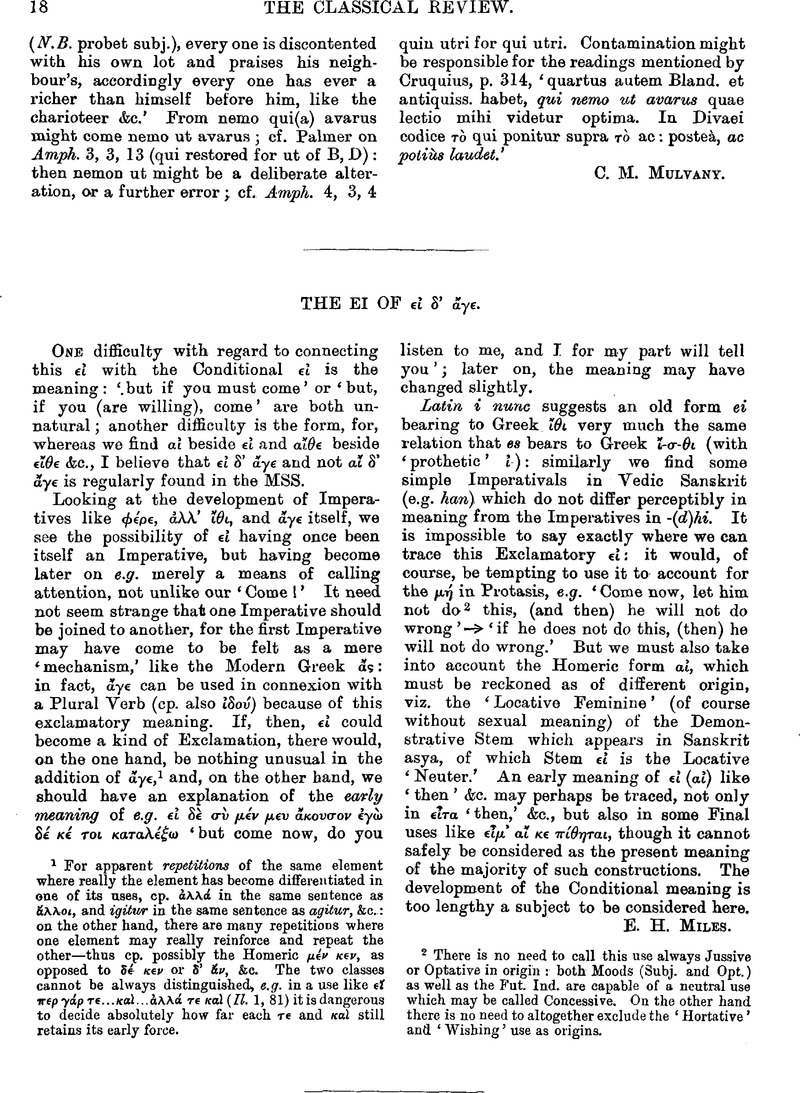No CrossRef data available.
Article contents
Abstract

- Type
- Review Article
- Information
- Copyright
- Copyright © The Classical Association 1895
References
1 For apparent repetitions of the same element where really the element has become differentiated in one of its uses, cp. λλ in the same sentence as λλοι, and igitur in the same sentence as agitur, &c.: on the other hand, there are many repetitions where one element may really reinforce and repeat the other—thus cp. possibly the Homeric μν κεν, as opposed to be δ κεν or δν, &c. The two classes cannot be always distinguished, e.g. in a use like εἴ περ γρ τε…κα…λλ τε κα (Il. 1, 81) it is dangerous to decide absolutely how far each τε and κα still retains its early force.
2 There is no need to call this use always Jussive or Optative in origin : both Moods (Subj. and Opt.) as well as the Fut. Ind. are capable of a neutral use which may be called Concessive. On the other hand there is no need to altogether exclude the ‘Hortative’ and ‘Wishing’ use as origins.


